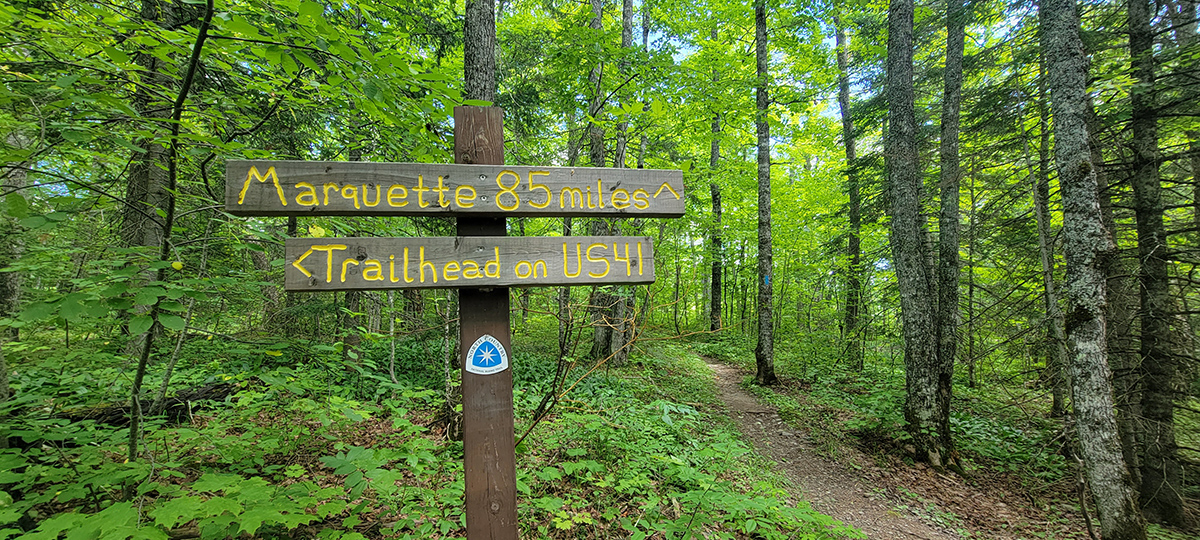WRITER | MIKAYLA BALK
Exciting new places for us to shop, work, live, or play typically mean that the landscape has been cleared for development, disrupting the area’s natural inhabitants. Here in Michigan, there are many mammal, bird, reptile, and insect species designated as special concern (SC), threatened (T), or endangered (E) on the Michigan Natural Features Inventory and protected under Michigan’s Endangered Species Act. When species have a high risk of extinction in the wild, restoration projects and laws are implemented to revive and protect them. Though not a complete list, here are some species we should pay special attention to:
MAMMALS
Gray Wolf (SC)
The gray wolf has a complicated history, but its population has been reduced throughout North America and Canada by hunting and habitat destruction. In Michigan, they are found in the Upper Peninsula and on Isle Royale.
Brenda and Jim Pearson own Howling Timbers, a wildlife sanctuary in Muskegon that currently houses 45 wolves and many other at-risk animals. Brenda explained that the largest threats to the wolf population are hunters, trappers, and habitat deforestation, which in turn reduces their prey. Since Howling Timbers is a nonprofit that doesn’t advertise, they work with volunteers and offer $20 educational tours on Sundays to educate the public and support their efforts.
Canadian Lynx (E) and Cougar (E)
Along with the gray wolf, the Canadian lynx is a predator occasionally spotted in Michigan’s UP, specifically in boreal spruce-fir forests. Another big cat rarity, the cougar, prefers forested landscapes near streams and rivers. It has seldom been spotted but used to be native to Michigan. It is considered endangered and protected under state law.
Indiana Bat (E), Northern Long-Eared Bat (SC)
The endangered Indiana bat is vulnerable to disturbances while hibernating in caves and under the bark of trees and has suffered greatly due to cave tourism that started in the 1960s. The northern long-eared bat is also found in caves, mines, and wooded areas and is at special concern status because its habitats are affected by logging and oil drilling. Further, white-nose syndrome has decimated North America’s bat population in general. Even for those who don’t find bats endearing, destruction of their habitats helps no one, as they help control the insect population and work to pollinate flowers.
REPTILES
Spotted Turtle (T), Eastern Massasauga Rattlesnake (SC), Copperbelly Water Snake (E)
The spotted turtle, a small species recognized by its black body with yellow speckles on its shell and skin, is threatened in Michigan because of rampant wetland habitat loss and capture by humans for pets. The eastern massasauga rattlesnake and the copperbelly water snake have seen population declines similar to the spotted turtle.
BIRDS
Kirtland’s Warbler (E), Piping Plover (E)
Birdwatchers have the privilege of seeing – and hearing – the Kirtland’s warbler in the northern Lower Peninsula and much of the UP during the summertime. They will nest only in young jack pines, so they rely on tree regeneration through fires. Fire controls have contributed to their decline. Almost extinct in the 1970s, the endangered birds are making a recovery.
The Piping Plover is an endangered small coastal bird with white, gray, and black coloring. While only considered near threatened in other locations, Great Lakes populations are on the verge of extinction due to habitat loss. They prefer wide, open sandy beaches – erosion, artificial break walls, and inlet dredging have contributed to their decline.
INSECTS
Mitchell’s Satyr Butterfly (E), Karner Blue Butterfly (T), Poweshiek Skipperling (T), Hine’s Emerald Dragonfly (E)
Mitchell’s satyr butterfly is considered one of the world’s rarest butterflies and can be seen at the Sarrett Nature Center in Benton Harbor in a rare wetland called a “fen.” The Karner blue butterfly can be identified by its gorgeous indigo wings. Interestingly, it feeds solely on wild lupine. The Poweshiek skipperling was once considered a common prairie butterfly, and the Hine’s emerald dragonfly is noted for its bright emerald-green eyes. Habitat destruction is the main cause of population decline for these and many other insects once abundant in Michigan.
Perhaps less interesting, but still worth noting, is the decline of freshwater river mussels due to dams, water pollution, sedimentation, and invasive zebra mussels. Their presence in creeks, rivers, and glacial lakes has been compromised. Sensitive organisms like mussels are a good indicator of water quality, and 32 species are listed on the Michigan Natural Features Inventory as special concern, threatened, or endangered.
For ways to help with conservation efforts, contact your local Michigan State University Extension office to ask about the Michigan Conservation Stewards Program and Citizen Science programs. As National Endangered Species Day approaches on May 15, you might consider an outing to your local nature center as a great way to involve all ages in learning about Michigan’s special creatures.
HowlingTimbers.org
Endangered.org
MNFI.anr.msu.edu/species/animals








